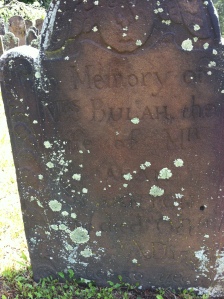Have you ever used the library to help with your research? If you’re super-lucky, there might be a book there that mentions your ancestors. But your library offers so much more than books! Below are some ways that libraries have helped me:
When I took my road trip to Guilford, CT in 2016, I used their library’s online collections to discover a colonial-era map, noting where everyone settled. I was able to find where John Scranton lived, and the next time I go, I’m going to check out a couple more ancestral plots!
When I last attended the Essex Society of Genealogists in person, I visited the nearby Lynnfield, MA Library’s genealogy room. (Every library should have a genealogy room!) It was there I discovered my ancestor John McMasters in the 1838 Guysborough (Nova Scotia) Census. This discovery cracked open a huge brick wall and led me to years and years worth of more research!
I wrote about how, in 2017, I visited the Holyoke Public Library’s history room, where I asked the librarians there if they happened to have anything on the Kosciusko Club. Lo and behold, they did! It wasn’t a lot, but it showed me that it’s always worth asking.
I’ve written about Rochester, NY’s Rundel Memorial Library’s awesome genealogy floor. Even before I was able to visit them, I took advantage of their collection of Rochester city directories, which showed me all the addresses where my Pleau ancestors lived while there.
After years of hoping and waiting, the Lynn, MA Public Library finally started putting the local newspaper, the Daily Item, online. I found out so much about my great-grandmother Bertha Colomy, especially the role that her church played in her young life.
Finally during lockdown, the Ancestry Library Edition was available to me at home through my own Norwalk, CT Library. I was able to mine the Tanguay Collection to research my French-Canadian lines and give me clues to find more of their records. Though remote access is no longer available, the library is a short walk from my house, and I can always spend a Saturday afternoon there.
The moral of the story is: dig into your library’s databases, see if they have any special collections, and talk to your librarian. You never know what you’ll find!





























